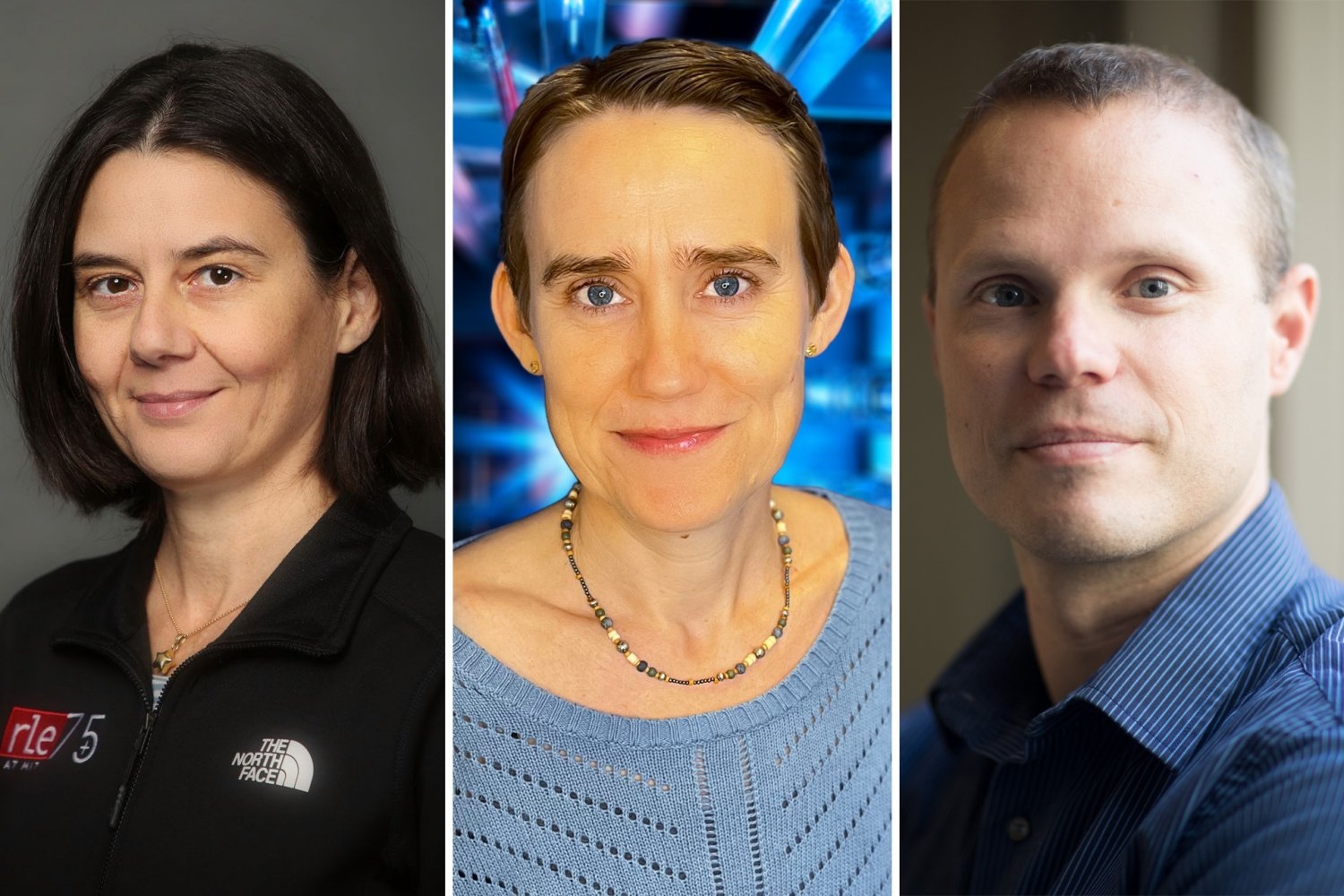
APS honors Paola Cappellaro, Maria Gatu Johnson, and Bradley Olsen for research, applications, teaching, and leadership; 10 additional MIT alumni also honored.
School of Engineering
Three members of the MIT faculty have been elected fellows of the American Physical Society (APS) for 2023. The APS Fellowship Program was created in 1921 for those in the physics community to recognize peers who have contributed to advances in physics through original research, innovative applications, teaching, and leadership. According to the APS, each year no more than one-half of 1 percent of the APS membership, excluding student members, are recognized by their peers for election to the status of fellow.
The following members of the MIT community were elected APS Fellows in 2023:
Paola Cappellaro, the Ford Professor of Engineering in the Department of Nuclear Science and Engineering, professor of physics, and member of the Research Laboratory of Electronics, is an expert in magnetic resonance, coherent control, and quantum information science. Cappellaro’s area of inquiry focuses on spin-based quantum information processing and precision measurements. With collaborators, she developed the concept and first demonstrations of NV-diamond magnetometers. Cappellaro’s major contributions have been in developing control techniques for nuclear and electronic spin qubits. Her work not only provides a deeper understanding of quantum many-body systems and their environment, but also applies this knowledge to the development of practical quantum nano-devices, such as sensors and simulators. The APS Division of Atomic, Molecular and Optical Physics elected Cappellaro for groundbreaking contributions to quantum control and quantum sensing with spin systems.
Maria Gatu Johnson, principal research scientist at the Plasma Science and Fusion Center, studies thermonuclear fusion generated by a process called inertial confinement, where lasers are used to implode a spherical capsule containing the fuel to high densities and temperatures. Gatu Johnson is particularly interested in understanding the conditions that influence the amount of energy generated by the thermonuclear fusion process, and she has developed unique diagnostic tools that allow for very precise analysis of the fusion experiments. The APS Division of Plasma Physics elected Gatu Johnson for pioneering efforts in the cross-cut field of plasma-nuclear science and for groundbreaking studies of macroscopic plasma flows in inertial confinement fusion implosions.
Bradley Olsen, the Alexander and I. Michael Kasser (1960) Professor in the Department of Chemical Engineering, is the faculty director of the MIT-Brazil and MIT-Amazonia programs in MIT’s Center for International Studies and a member of the Program in Polymers and Soft Matter. His research within the physics community specializes in polymer physics, touching on areas including the physics of biomolecules, self-assembly, network physics, and polymer informatics. He is particularly interested in how biosynthesis can be used as a natural green chemistry for the preparation of designer polymeric materials, how controlled polymerization through biology can give us unique materials that provide insight into polymer physics, and the unique physics of self-assembly in complex protein nanostructures for biotechnology and energy applications. He was awarded the APS Dillon Medal for Polymer Physics in 2016. The APS Division of Polymer Physics elected Olsen for developing new theories of polymer gel mechanics that account for network topology, and for generating applied theory and experiments to advance our understanding of polymer self-assembly and dynamics using proteins and hybrid protein macromolecules as model polymer systems.
Ten additional alumni were also elected to the APS this year. They are: Reba M. Bandyopadhyay ’93; David L. Hu ’01, PhD ’06; Kerwyn Casey Huang PhD ’04; H. Pirouz Kavehpour PhD ’03; Boris Kozinsky ’00, PhD ’07; Manyalibo J. Matthews PhD ’98; Felix I. Parra SM ’07, PhD ’09; Dmitry A. Pushin PhD ’07; Caterina Riconda PhD ’97; and Sarah Veatch ’98.
